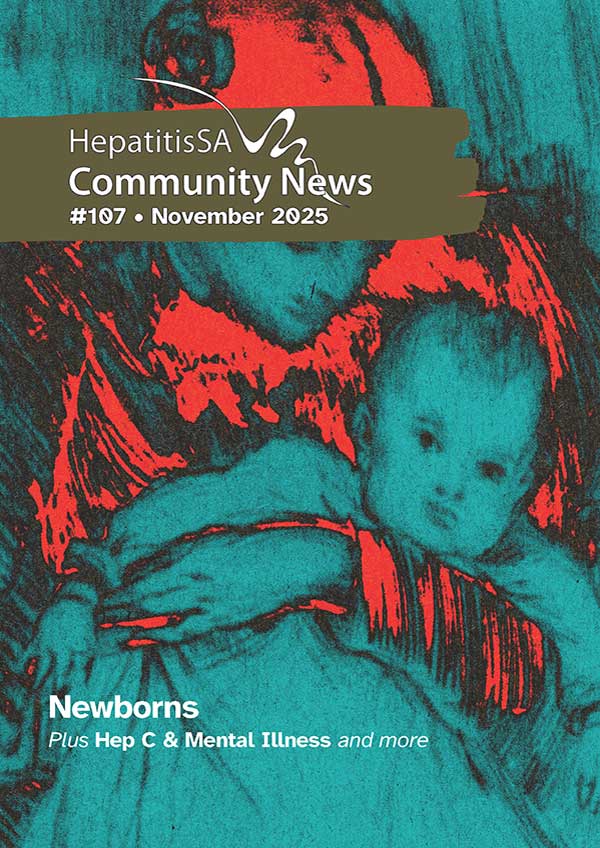Long-acting treatment could be the catalyst for hepatitis C elimination in vulnerable communities. Despite the introduction of DAAs 50 million worldwide still live with chronic hepatitis C, and there are a million new infections each year. In Australia, transient and remote communities continue to be at a disadvantage in accessing hepatitis C treatment.
Researchers have been working on developing techniques for slow-release delivery of the required doses of drugs over the course of the treatment. Options being discussed include injection, implant, skin patch and gastric resident systems (GRS), the latter using ingestible and retrievable devices in forms ranging from star-shape to spiral.
Adherence has long been a challenge in hepatitis C treatment. Although treatment duration has reduced significantly from 40 weeks to 8 or 12 weeks, taking the medicines daily for two or three months can still be difficult for many who could be dealing with other issues in their lives.
Healthcare providers could carry out tests at accessible community locations, then prescribe and dispense the long-acting medication on the spot to those who test positive.
Access is another challenge; one that goes both ways. For service providers, connecting with hard-to-reach people to ensure on-time prescriptions and completion of the course of treatment can be a barrier due to limited resources and capacity. On the other hand, for patients, getting ongoing access to care providers is a problem if they have no permanent residence, need to move around for work, have limited access to transport or live in remote regions.
Long-acting hepatitis C treatment together with point-of-care rapid testing, could potentially overcome these barriers by enabling single-encounter test and treat. Healthcare providers could carry out tests at accessible community locations, then prescribe and dispense the long-acting medication on the spot to those who test positive.

A study to evaluate the preferences and acceptability of single-dose options surveyed people living with – or at risk of – chronic hepatitis C, found that a significant minority preferred single-dose options. Participants were presented the options of daily pills, or a single-dose via injection, an implant or gastric resident device and asked to pick the option they most preferred.
The study reported that among hepatitis C positive participants, over 37 per cent most preferred an injection, with about six per cent preferring an implant, and another six per cent a gastric residence device, compared to just over 50 per cent who would most prefer swallowing one to three pills daily.
Among at-risk participants who had received injectable medications in the past, almost 90 per cent expressed willingness to receive one in the future.
The authors concluded that the data indicated high acceptability of long-acting treatments, which for a substantial minority might even be preferable to pills, for the treatment of hepatitis C, and that long-acting hepatitis C treatments might contribute to elimination of hepatitis C.

Another study explored the prospects of long-acting DAA treatment being used in single-encounter cure of hepatitis C and the challenges of adapting existing DAAs to the new delivery technologies, as well as pharmacological, regulatory and economic considerations.
The report noted that many of the key elements of a single-encounter cure of hepatitis C infection have already been tested in another study at 38 sites in Brazil, South Africa, Thailand, Uganda, and the United States using the approach of confirming hepatitis C infection, dispensing all pills at once and not monitoring thereafter except to encourage adherence and check for cure.
The cure rate for the single-encounter approach (95 per cent) was found to be similar to traditional approaches. Because some of the treatment failures were due to poor adherence or loss to follow-up, and visits following the initial contact were merely to encourage adherence, the study showed the advantage of long-acting treatment where adherence would no longer be an issue.
The cure rate for the single-encounter approach (95 per cent) was found to be similar to traditional approaches.
Front-line workers that the Community News spoke to, agree that single-dose long-acting direct-acting antivirals could be a game changer. “It would make things a lot easier both for us and for the clients, especially those who have no stable accommodation, are in prison for a short time, or live in remote regions,” said one worker who does point-of-care testing at community locations, and helps to facilitate initiation of treatment.
Potential long-acting delivery systems for DAAs are inspired by methods that have worked for other drugs such as skin patches for long-acting contraceptives and gastric residence devices for treating tuberculosis.
One study, published in 2020, was able to develop a long-acting DAA system (LA-DAAS) that supported controlled release of the medicine over weeks. The system tested in that study was inspired by gastric resident system (GRS) used to deliver drugs to people for monthly treatment of tuberculosis. The gastric resident system could also be set up to detect body temperature rises (marker of infection) and alcohol intake.

The GRS device was evaluated in Yorkshire swine, which have similar gastric anatomy to humans. In the 30-day period when the GRS was in use, the animals did not show any weight loss, evidence of obstruction, or limitation in passage of food or liquids; additionally, mucosal surfaces did not show injury, erosions, or ulcerations, with those initial tests showing the devices to be safe and effective for that period.
The researchers called for further work to evaluate the acceptability and feasibility of long-acting DAA systems among patients and healthcare providers, as well as ongoing work towards single-dose delivery for full hepatitis C treatment.
Long-acting treatment options do not need to be high-tech like the GRS tested in the above study. One recent research into the feasibility of long-acting treatment for hepatitis C looked at simpler methods: injection, skin patch and implant.
The survey explored the acceptability of hepatitis C long-acting treatment among providers and policymakers in low and middle-income countries (LMICs). It found that 93 per cent of providers were willing to prescribe long-acting treatments and almost three-quarters preferred to prescribe long-acting treatments. Policymakers were also open to the strategy of long-acting treatments as long as efficacy, safety and costs remain the same.

The providers surveyed noted that long-acting treatment may be particularly beneficial for those with irregular healthcare contact, unstable housing or other socio-economic challenges.
The study reported that a minimal monitoring strategy for a 12-week course of oral treatment that included initial dispensation of full treatment course with two follow-up phone calls and one laboratory assessment at 24 weeks was found to be as effective as standard monitoring in a diverse group of LMIC settings. It concluded that a similar minimal monitoring strategy would be a reasonable approach for treatment based on the use of long-acting medicines.
Given the barriers faced by communities at high-risk of hepatitis C, and the challenge faced by providers in connecting with these communities on an on-going basis, long-acting DAAs for hepatitis C could indeed offer a simple, effective one-encounter strategy that could speed up progress towards eliminating the disease.
Sources:
Development of LA Treatment for Hepatitis C (May 2020)
https://pmc.ncbi.nlm.nih.gov/articles/PMC7275718/
Preferences of PLW or at Risk of HC for LA treatment for hepatitis C (Oct 2021, Aug 2022,) – https://pmc.ncbi.nlm.nih.gov/articles/PMC9402695/
https://academic.oup.com/cid/article/75/1/3/6410743,
Prospects for LA Treatments for Hepatitis C (Nov 2022) – https://academic.oup.com/cid/article/75/Supplement_4/S525/6835716
Preferences and feasibility – LMI countries providers and policy makers (Mar 2024) – https://onlinelibrary.wiley.com/doi/10.1111/jvh.13921
Last updated 16 May 2025
More from:
Enjoyed this article? Subscribe to be notified whenever we publish new stories.
Subscribe for Updates





